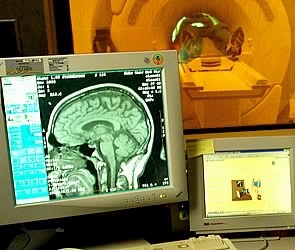
“Men may direct more attention to sensory aspects of emotional stimuli and tend to process them in terms of implications for required action, whereas women direct more attention to the feelings engendered by emotional stimuli,” said Andrzej Urbanik, M.D., Ph.D., chair of Radiology at Jagiellonian University Hospital in Krakow, Poland.
For the study, Dr. Urbanik and colleagues recruited 40 right-handed volunteers, 21 men and 19 women, between the ages of 18 and 36. The volunteers underwent fMRI while viewing pictures from the International Affective Picture System (IAPS), a widely used, standardized testing system comprised of several thousand slides of various objects and images from ordinary life designed to evoke defined emotional states.
The images were displayed in two runs. For the first run, only negative pictures were shown. For the second run, only positive pictures were shown.
While viewing the negative images, women showed decidedly stronger and more extensive activation in the left thalamus, which relays sensory information to and from the cerebral cortex, including the pain and pleasure centers. Men exhibited more activation in the left insula, which gauges the physiological state of the entire body and then generates subjective feelings that can bring about actions. Information from the insula is relayed to other brain structures involved in decision making.
“The brain activation seen in the women might indicate stronger involvement of the neural circuit, which is associated with identification of emotional stimuli,” Dr. Urbanik said. “The more pronounced activation of the insular cortex in the men might be related to the autonomic components, such as elevated heart rate or increased sweating, that accompany watching emotional material.”
The autonomic nervous system controls involuntary functions, including respiration, heart rate and digestion, and helps to adjust certain functions in response to stress or other environmental stimuli. It is responsible for the body’s “fight or flight” response to threatening situations.
“In men, the negative images on the slides were more potent in driving their autonomic system,” Dr. Urbanik said. “This might signal that when confronted with dangerous situations, men are more likely than women to take action.”
While viewing positive images, women showed stronger and more extensive activation in the right superior temporal gyrus, which is involved in auditory processing and memory. Men exhibited stronger activation in the bilateral occipital lobes, which are associated with visual processing.
Dr. Urbanik believes these differences indicate that women may analyze positive stimuli in a broader social context and associate the positive images with a particular memory. Viewing a picture of a smiling toddler might evoke memories of a woman’s own child at this age. Conversely, male responses are more perceptual.
“Positive images are devoured by mens’ visual and motivational systems,” Dr. Urbanik said.
Co-authors are Lilianna Podsiadlo, Ph.D., Michal Kuniecki, Ph.D., Justyna Kozub, M.Sc., and Barbara Sobiecka, M.Sc. Eng.